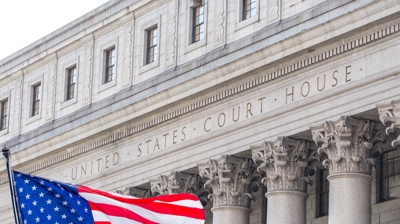
Houston Patent Infringement Defense Attorneys
Defending Clients Against Patent Infringement Claims in Texas
Patent infringement claims are a federal cause of action brought by patent owners, or entities with rights in a patent, against a party alleged to have made, used, or sold a patented invention without authorization. Patent holders who take action in federal court may seek injunction to cease the use of an item or invention, damages, or a license agreement against the alleged infringer.
If you face a claim for patent infringement, working with proven business litigation attorneys like those at Hendershot Cowart P.C. is crucial. Not only is patent litigation a complex and detailed endeavor, it can amount to a matter of financial survival, even when claims are brought by “patent trolls,” or companies that hold patents almost solely to sue for financial awards.
As a Houston-based firm regarded for our ability to successfully resolve intellectual property disputes for clients in state and federal venues, we have the requisite tools and resources demanded by these difficult cases.
On This Page:
- Breaking Down the Patent Infringement Claim
- Defense & Response Options
- Steps We Take in Defending Against Patent Infringement Claims
- Requesting a Declaratory Judgment From the Court
- Defending Against Patent Trolls
- Protect Your Rights and Interests With Our Proven Texas Patent Lawyers
Discuss a patent infringement claim and defense personally with a member of our team. Call (713) 783-3110 for an initial consultation .
While personalized legal representation is important to defending against the patent infringement claim, there are some general points worth knowing if you face such claims. This includes evaluating what type of patent infringement is being claimed.
Under Title 35 of the U.S. Code § 271, there are three general types of claims:
- Direct infringement – This infringement claim involves the importation of patented creations or equivalents into the U.S., or the use, sale / offer to sell, or manufacturing of patented creations during the patent term. Direct infringement is a strict liability tort, which means it does not require intent or knowledge. They can also become challenging when two parties or more are involved, such as when questions arise over liability, and may be used to address a seller’s internal infringement of an apparatus, system, or method, such as internal testing or sales demonstrations where products using a patented method are exhibited.
- Indirect Infringement – There are two types of indirect infringement recognized under patent law, both of which require the accused to have had at least some knowledge and intent. Indirect infringement claims are common when parties look to hold sellers and / or manufacturers liable for infringement performed by end-users, such as consumers.
- Contributory infringement – Contributory infringement involves a direct infringement by an accused party which knows components are a material part of a patented combination that has no significant non-infringing use. Federal courts have ruled that contributory infringement is limited to contributory acts which occur in the U.S.
- Inducement – Inducement involves actively inducing infringement of a patent. This claim requires proof that another party actually infringed, the alleged inducer knew of the patent, and that despite this knowledge induced the infringing acts with the specific intent to encourage the other party’s infringement.
Evaluating the type of patent claim and understanding their principles is important to assessing potential damages, and identifying ways to mitigate those damages.
Whether infringement claims are brought by legitimate parties or non-practicing entities (patent trolls) which purchase patent rights as a means of extorting nuisance settlements, they can create exposure to costs, time-consumption, and potentially larger problems. For these reasons, working with skilled and insight-driven attorneys can help you fully evaluate the merits and intent behind a claim, and begin to explore your available defense options after being threatened with infringement.
Defense strategies against patent infringement cases generally focus on three main concepts:
- Patent validity – Meticulous assessments of patents invoked in an infringement claim can provide direction for the defense, as well as options for challenging a patent’s validity in a case’s early stages. This may be the case when a patent has lapsed, fails to comply with patent law requirements, or contains subtle but important flaws that were previously overlooked. An invalidity defense is a type of counter-attack against the patent itself, and may involve the filing of a motion to dismiss the claim.
- Non-infringement – The defense of non-infringement is one of the most common defense strategies, and it generally claims infringement did not occur because the process or product in question is not the same as what’s protected by patent in the case.
- Prior art – The defense of prior art claims that you received a patent when you shouldn’t have because someone else has already been using the trademark publicly.
Patent owners have the burden of proving infringement, but pro-active discovery, investigation, and pre-trial work, including technical and procedural considerations unique to the case, are vital to a successful defense.
When handling infringement cases, there are general stages of action at which a case can be successfully defended against:
- Motion to Dismiss – Attacking the validity of a patent infringement claim begins with determining a basis for filing a motion to dismiss under Rule 12(b)(6) of the Federal Rules of Civil Procedure. Among other things, the motion to dismiss will allege the patent is invalid for failure to comply with one or more of the conditions set forth in the U.S. Code. As illustrated by rulings in the Limelight case and the Alice Corporation case, for example, patents of abstract concepts are not entitled to legal protection. Additionally, patents that fail the “machine or transformation test,” which determines if a patent (often a process patent) is inextricably tied to a machine or apparatus or transforms an article into a different state or object, are not entitled to protection.
- Infringement Contentions – Plaintiffs must make their case for infringement on each of the claims with appropriate specificity in its Preliminary Infringement Contentions (PICs). If the plaintiff fails to do so and the proper objection is made, the judge may strike the allegations. We attack Infringement Contentions to the extent that they fail to comply with either the court's rules or the applicable legal standards. Because a claim cannot be based on stricken allegations, a case can be won at this point.
- Invalidity Contentions – Proving a patent is not valid, and not entitled to legal protection, can be achieved through challenges made in Invalidity Contentions under a number of reasons. These include Sections 101, 102, 103, and 112 of the U.S. Code, or un-patentable subject matter, prior art, obviousness, and indefiniteness.
- Markman Hearing – This is a claims construction hearing, in which the judge gives definition to the material terms and words in the patent's claims. We aggressively advocate as to how the judge construes these claims, whether narrowly or broadly, so that their construction and interpretation falls in the manner that is in the best interest of our client and most favorable to their defense.
- Motion for Summary Judgment – Determine whether there is a basis to argue, as a matter of law, that there is no issue of material fact to be determined by the judge or jury, and that we are entitled to judgment and case dismissal. Our goal here is to win the motion for summary judgment; if we do so, you will be spared the time and expense of defending the case at trial.
On occasion, we encounter situations in which the customers of our client, but not our actual client, are sued for patent infringement. In a typical case (such as those involving software licensing), your customers may request indemnification from the liability created by a patent troll's infringement claim. Our goal is to "beat the troll to the punch" by filing a declaratory judgment action.
In a declaratory judgment action, we ask the court to declare that the patent is invalid due to un-patentable subject matter, prior art, obviousness, and indefiniteness.
In these types of patent infringement cases, our Houston patent attorneys can in effect defend both you and your customers, and if we are successful in obtaining a declaratory judgment, we will have the patent declared invalid before you are required to provide indemnity.
Patent trolls, or non-practicing entities (NPEs) which bring a majority of patent cases, pose substantial threats to both business owners and entrepreneurs in their attempts to seek financial awards. Although these cases pose unique challenges, they can be effectively handled by experienced attorneys like those at Hendershot Cowart P.C.
When defending claims brought by patent trolls, we work to not only assess exposure to damages and validity of claims, but to also develop tailored strategies for securing the best possible results given the circumstances at hand. In many cases, this begins with the motion to dismiss, which will allege that the patent does nothing more than describe a well-known, and typically obvious, abstract idea, or raise arguments as to a claim’s failure to identify the infringing product, insufficient rights of the plaintiff, or improper jurisdiction.
Patent trolls’ business models focus on getting as much money as possible as soon so possible. As a firm that represents legitimate and successful businesses across Texas, we draw a hard line in the sand when clients face illegitimate claims, and work aggressively to defend against recurrent claims and demands for what are, in effect, ransoms.
Our lawyers are dedicated to fighting on behalf of a diverse clientele in challenging intellectual property disputes and patent infringement cases. If you wish to discuss your potential matter with a member of our team, and learn how our background, decades of experience, and breadth of knowledge can be of benefit to you, call (713) 783-3110 or use our online form to arrange an initial consultation with our patent attorneys.

Why Choose Our Team?
Unwavering Commitment to the Success of our Clients
With over 100 years of combined experience, we bring big firm expertise with personal firm service. Whether facing multi-jurisdictional litigation or regulatory issues, we stand by your side, fighting for your success.
-
In Business Since 1987.Let us put the full force of our 100+ years of combined experience to work for you.
-
We Serve Clients Throughout Texas and the Nation.We handle matters from the Red River to the Rio Grande and beyond.
-
We Believe in Prompt, Personal Attention.
As a smaller, regional law firm, we unite real experience with personal attention.
-
We Want to Be Your Law Firm for Life.We take a vested interest in our clients' success — from start to finish.
-
We Shoulder the Legal Burden.™And let you get back to business.
To Us, Every Case is Personal
Real Stories, Real Results, Real Advocacy
-
"I'm very happy that I chose to work with him."I wanted to share my positive experience working with Ray. I felt that he truly listened to my needs and provided solutions that aligned perfectly with what I was looking for.
-
"They come with my very highest recommendation."The law team at Hendershot Cowart P.C. are simply the best! Ray and Carolyn have been tremendous to work with, and our experience has been top-notch. They come with my very highest recommendation.
-
"We were able to navigate legal processes very smoothly and in a timely manner to keep our company in good standing."
We were able to navigate legal processes very smoothly and in a timely manner to keep our company in good standing.
-
"I really appreciate your hard work put forth for getting us through our sale"I really appreciate your hard work put forth for getting us through our sale. You both did a amazing job communicating the under standings we needed through the transaction.
-
"Great group of attorneys to be in your side"Great group of attorneys to be in your side when you need it most.
-
"I am 100% pleased with his professional services."Ray solved a non-compete situation for me that needed addressed.
-
"Very happy with the work he did!"Mr. Hendershot did a contract review for me. He was very thorough and explained the contract really well.
-
"Would highly recommend the firm!"Everything you want in a good lawyer. He was proactive and got our matter resolved in short order.

Stay Informed
-
 Texas Senate Bill 1318: New Non-Compete Rules for Physicians, Dentists, Nurses & PAsRead More
Texas Senate Bill 1318: New Non-Compete Rules for Physicians, Dentists, Nurses & PAsRead More -
 GLP-1 Shortage Ended: Can You Still Legally Prescribe or Compound Semaglutide and Tirzepatide?Read More
GLP-1 Shortage Ended: Can You Still Legally Prescribe or Compound Semaglutide and Tirzepatide?Read More -
 Recent Healthcare Fraud Enforcement Actions in Texas: Nine Cases Result in $12+ Million in RecoveriesRead More
Recent Healthcare Fraud Enforcement Actions in Texas: Nine Cases Result in $12+ Million in RecoveriesRead More


